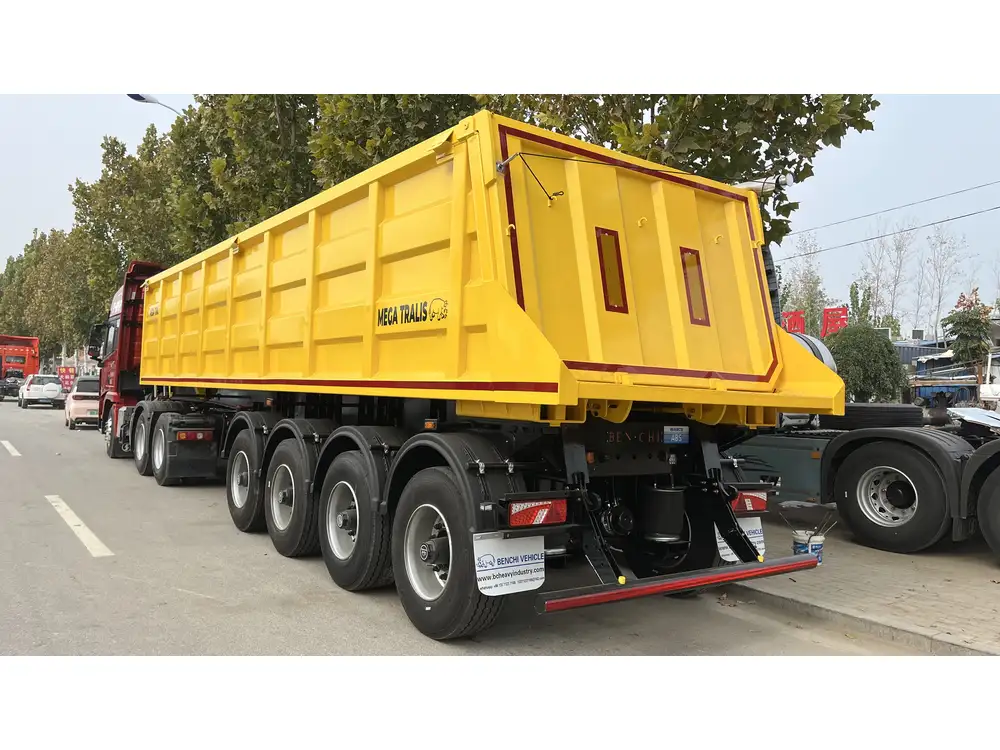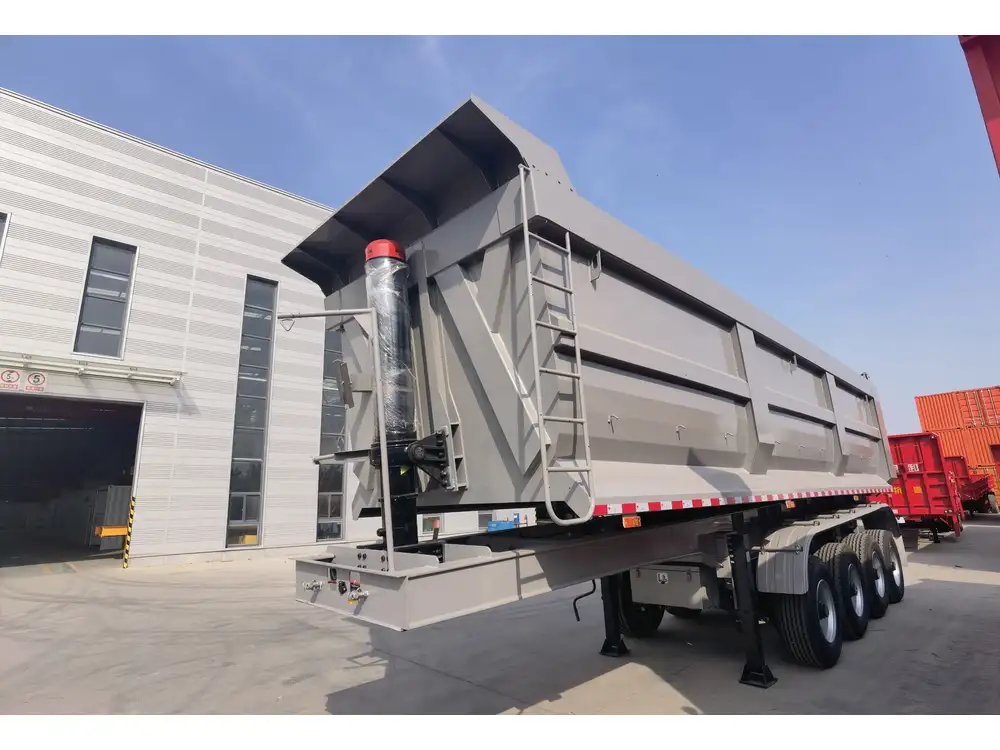Transforming a standard trailer into a dump trailer can be a game-changer for those seeking enhanced functionality in their hauling processes. Dump trailers offer the convenience of unloading payloads without the need for manual labor, making them ideal for a variety of applications, from landscaping to construction. This guide will delve into the essential steps, components, and tips involved in converting a conventional trailer into a highly effective dump trailer.
Understanding the Essence of Dump Trailers
What is a Dump Trailer?
A dump trailer is a specialized type of trailer equipped with a hydraulic lift system that allows the rear or side to be raised, facilitating the easy dumping of materials. Typically utilized in industries such as construction, landscaping, and waste management, these trailers can carry aggregates, debris, and other heavy materials.

Advantages of Owning a Dump Trailer
The benefits of owning a dump trailer are numerous, including:
- Time-Saving: Dump trailers streamline the unloading process, significantly reducing time spent on project sites.
- Enhanced Safety: Utilizing a dump feature minimizes the risk of injury associated with heavy lifting.
- Versatile Applications: Ideal for transporting and dumping dirt, gravel, sand, and other materials across various industries.
- Increased Efficiency: The ability to dump loads in one motion enables faster project completion.
Preliminary Considerations Before Conversion
Before embarking on the journey of converting your trailer, it’s crucial to assess various factors to ensure a successful transformation.
Assess Your Trailer Type
Determining the type of trailer you currently possess is paramount. Trailers can vary greatly in terms of structural design, weight capacity, and features. Common types that can be converted include:
| Trailer Type | Description | Weight Capacity |
|---|---|---|
| Utility Trailer | Lightweight, open design, ideal for small loads | 1,500 – 3,000 lbs |
| Flatbed Trailer | Flat surface, easy to load/unload materials | 2,000 – 6,000 lbs |
| Enclosed Trailer | Fully covered, great for protecting loads from elements | 2,500 – 5,000 lbs |
| Cargo Trailer | Typically used for transporting goods, customizable design | 1,500 – 7,000 lbs |

Determine Your Payload Needs
Understanding what you will be hauling is essential before converting your trailer. Analyzing factors such as:
- Weight Limitations: Ensure your trailer can handle the expected load safely.
- Material Types: The materials can dictate the design and mechanism of the dumping system.
Calculate the Budget
Establishing a budget is imperative to avoid overspending during the conversion process. Key costs to consider include purchasing hydraulic components, additional materials, and labor, if applicable.
Essential Components Required for Conversion
The successful transformation of a trailer into a dump trailer requires several key components. These include:
- Hydraulic Cylinder: The heart of the dump mechanism, responsible for lifting the trailer bed.
- Hydraulic Pump: Supplies hydraulic fluid to the cylinder, initiating the lift.
- Battery: Powers the hydraulic system, especially for trailers without access to a truck’s electrical system.
- Frame Reinforcement: Structural enhancements may be necessary to support the added weight and stress of hydraulic operations.
- Control Valve: Allows for the operator to control the lift and dump process.

Tools Required
A successful DIY conversion requires specific tools, including:
- Wrenches and sockets
- Drill and drill bits
- Welder
- Hydraulic lines
- Safety equipment (gloves, goggles, etc.)
Step-by-Step Conversion Process
Here’s a structured breakdown of how to effectively convert your trailer into a dump trailer.
Step 1: Preparation and Safety
Before starting the conversion:
- Ensure Safety: Wear appropriate safety gear to protect yourself from injury.
- Clear the Work Area: Have a spacious area free from obstacles.

Step 2: Assess and Reinforce the Trailer Frame
- Inspect the Existing Frame: Check for any structural weaknesses.
- Reinforce the Frame: Use additional steel or aluminum to reinforce the trailer’s frame to bear the hydraulic lift’s weight.
Step 3: Install the Hydraulic Lift System
Mount the Hydraulic Cylinder:
- Position the hydraulic cylinder centrally under the trailer’s bed.
- Securely attach it to the frame using bolts and reinforcements.
Install the Hydraulic Pump:
- Place the hydraulic pump in a location that is easily accessible.
- Connect the pump to the battery and ensure the electrical connections are secure.
Connect Hydraulic Lines:
- Attach hydraulic lines from the pump to the cylinder.
- Ensure there are no leaks by checking all connections thoroughly.
Step 4: Fabricate and Attach the Dumping Mechanism
Construct the Dumping Mechanism:
- Depending on the trailer design, you may need to create a pivot point that allows the bed to tilt.
- Attach it securely to the bed and frame.
Test the Mechanism:
- Once assembled, conduct a dry run of the dump mechanism without a load.
- Observe for any irregularities in motion or sound that might indicate problems.

Step 5: Final Touches and Safety Checks
Install Control Valve:
- Ensure it is positioned in a location that is accessible to the operator when unloading.
Conduct Safety Checks:
- Inspect all hydraulic connections and frame reinforcements.
- Conduct a final check of the entire trailer to ensure it meets safety standards.
Add Weight Distribution:
- Consider adding weight distribution enhancements to balance the trailer when loaded, improving stability on the road.
Maintenance and Care of Your Dump Trailer
To ensure long-lasting performance, regular maintenance is crucial. Key maintenance practices include:
| Maintenance Task | Recommended Frequency |
|---|---|
| Hydraulic Fluid Replacement | Every 6 months |
| Inspect Hydraulic Lines for Leaks | Monthly |
| Check Electrical Connections | Monthly |
| Frame Reinforcement Inspection | Monthly during heavy usage |
| Tire Pressure and Condition | Before each use |
Frequently Asked Questions (FAQs)

Can any trailer be converted into a dump trailer?
Not all trailers are suitable for conversion. It’s important to assess the structural integrity and weight capacity of your trailer to ensure it can handle the modifications.
How much does it cost to convert a trailer into a dump trailer?
The cost can vary widely based on the type of trailer, materials needed, and whether you hire a professional. Typically, a DIY conversion can range from $1,000 to $5,000.
Is it legal to modify trailers?
Check local regulations regarding trailer modifications to ensure compliance with safety standards and registration.

How often should I perform maintenance on my dump trailer?
Regular maintenance should be performed every six months at a minimum, with checks conducted before each use.
Conclusion
Converting a standard trailer into a dump trailer is a rewarding undertaking that enhances functionality and efficiency in hauling materials. Through careful assessment, proper planning, and execution, you can create a versatile piece of equipment that meets your needs. This comprehensive guide serves as a roadmap, providing all the necessary information to embark on this transformative project. Remember, safety and compliance should always be your top priority throughout the conversion process. With the right tools and determination, you can turn your trailer into an effective dump trailer, ready to tackle any job with ease.



